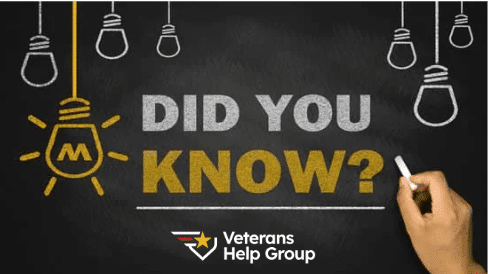Table Of Contents
Cold Weather Injuries
Service members may have been exposed to extreme cold in combat and military training missions. The major cold injuries service members suffer from are frostbite, non-freezing cold injuries, immersion foot, and hypothermia.
What is a Cold Injury?
Cold weather injuries occur when there is an imbalance of body temperature regulation, or where heat loss is greater than heat production in an area of the body or the body core. There are four primary types of cold injuries: hypothermia, frostbite, non-freezing cold injuries, and injuries related to cold exposure.
Hypothermia
Hypothermia is a medical emergency where the body loses heat faster than it can produce heat and causes a dangerously low body temperature. Hypothermia occurs when the body temperature falls below 95 F.
When the body temperature drops, the heart, nervous system, and other organs can’t work normally. Hypothermia is typically caused by exposure to cold weather or immersion in cold water.
Frostbite
Frostbite is an injury caused by freezing of the skin and underlying tissues. The skin becomes cold and red, then numb hard and pale. Frostbite is most common on the fingers, toes, nose, ears, cheeks, and chin.
Non-Freezing Cold Injuries
A non-freezing cold injury (NFCI) is an injury of the hands or feet resulting from exposure to wet conditions and temperatures just above freezing. At first the tissue is cold and anesthetic and progresses to hyperemia in 24-48 hours. Hyperemia is accompanied by an intense burning sensation as well as blisters, redness, and ulcerations.
How Veterans May have had Cold Injuries
The risk of cold injury depends on several environmental conditions including temperature, wind and moisture, in combination with physical activity, the duration of exposure, and amount of protection.
Veterans may have been exposed to extreme cold without adequate protection during:
- World War II: The Battles of the Bulge, fought in December 1944 through January 1945 under conditions of extreme cold
- Korean War: The Chosin Reservoir Campaign conducted from October 1950 through December 1950 in temperatures that dropped to 50 F below zero with a wind chill factor of 100 F below zero
- Operation Enduring Freedom (OEF) in Afghanistan
- Other campaigns or circumstances during military service, including training
Health Problems Associated with Cold Injuries
Veterans with a history of cold injury may experience the following signs and symptoms at the site of the original injury:
- Chronic fungal infection of the feet or nails
- Disturbances of nail growth
- Excessive sweating unrelated to heat or exercise
- Chronic burning pain
- Abnormal skin color or thickness
- Cold sensitization
- Joint pain or stiffness
- Raynaud’s phenomenon (discoloration is fingers/toes after exposure to changes in temperature)
- Weakness of hands or feet
- Night pain
- Weak or fallen arches
- Edema or swelling
- Numbness
- Paresthesia (abnormal sensation of the skin such as tingling, prickling, chilling, burning, numbness with no apparent cause)
- Breakdown or ulceration of cold injury scars
- Vascular insufficiency
- Increased risk of developing conditions such as:
- Peripheral neuropathy
- Squamous cell carcinoma
- Arthritis or other bone abnormalities
How to Get VA Disability Rating?
To establish a service connection a cold weather injury veterans must demonstrate: (1) a current diagnosis of a cold weather injury or residual; (2) an in-service event, injury, or illness; and (3) a medical link between the current diagnosis and in-service event.
How is are Cold Injuries Rated?
Frostbite and other conditions caused by overexposure to the cold can cause permanent damage to the arteries, nerves, and veins are rated on the persistent symptoms of the condition.
| Rating | Symptoms |
| 30% | Joint paint, numbness, or sensitivity to the cold in the area affected and two or more of the following: discoloration of the skin, abnormal nail growth, tissue loss, decreased ability to feel, hyperhidrosis, or other abnormalities proven by x-ray |
| 20% | Joint pain, numbness, or sensitivity to the cold in the area affected and one of the following: discoloration of the skin, abnormal nail growth, tissue loss, decreased ability to feel, hyperhidrosis, or other abnormalities proven by x-ray |
| 10% | Pain, numbness, or sensitivity to the cold in the affected area |
These ratings are for each individual body part affected. If multiple body parts are affected, then they each receive a separate rating. However, if multiple fingers or toes are affected, then it is just rated as one hand or foot.
Injuries such as: amputations, squamous cell carcinoma, scars, and peripheral neuropathy are rated under the appropriate rating diagnostic code for the condition.
Veterans Help Group have been supporting veterans in getting the benefits they deserve since 1995. If you or a loved one served, and suffer from a cold related injury, we are here to help. Call Veterans Help Group at 855-855-8992 or complete our free veterans benefits case evaluation form.

VA Disability Benefits and Tax Exemptions: What You Should Know
VA Disability Benefits and Tax Exemptions: What You Should Know Written by: Schuyler Swanton,...

Veterans Help Group In The Community
Veterans Help Group in the Community Written by: Bobbi Boudi, Director of Community Outreach, Amy...

The Veterans Appeals Efficiency Act of 2025
The Veterans Appeals Efficiency Act of 2025 Several bills are currently pending in Congress that...





